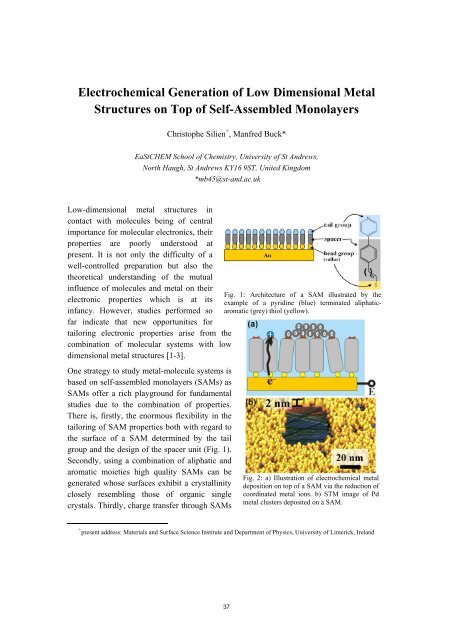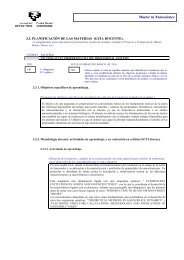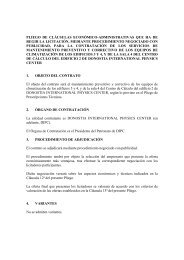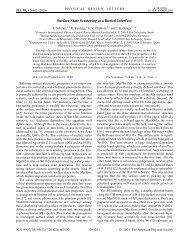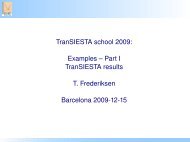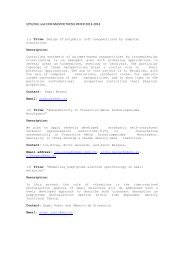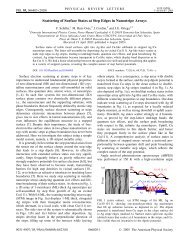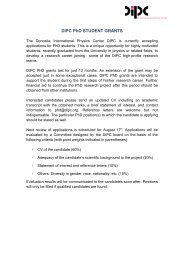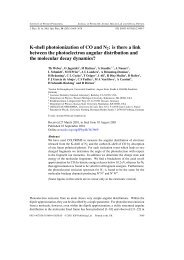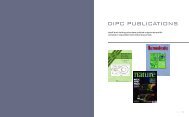SYMPOSIUM ON SURFACE SCIENCE 2011 Baqueira Beret, Lleida ...
SYMPOSIUM ON SURFACE SCIENCE 2011 Baqueira Beret, Lleida ...
SYMPOSIUM ON SURFACE SCIENCE 2011 Baqueira Beret, Lleida ...
You also want an ePaper? Increase the reach of your titles
YUMPU automatically turns print PDFs into web optimized ePapers that Google loves.
Electrochemical Generation of Low Dimensional Metal<br />
Structures on Top of Self-Assembled Monolayers<br />
Christophe Silien + , Manfred Buck*<br />
EaStCHEM School of Chemistry, University of St Andrews,<br />
North Haugh, St Andrews KY16 9ST, United Kingdom<br />
*mb45@st-and.ac.uk<br />
Low-dimensional metal structures in<br />
contact with molecules being of central<br />
importance for molecular electronics, their<br />
properties are poorly understood at<br />
present. It is not only the difficulty of a<br />
well-controlled preparation but also the<br />
theoretical understanding of the mutual<br />
influence of molecules and metal on their<br />
electronic properties which is at its<br />
infancy. However, studies performed so<br />
far indicate that new opportunities for<br />
Fig. 1: Architecture of a SAM illustrated by the<br />
example of a pyridine (blue) terminated aliphaticaromatic<br />
(grey) thiol (yellow).<br />
tailoring electronic properties arise from the<br />
combination of molecular systems with low<br />
dimensional metal structures [1-3].<br />
One strategy to study metal-molecule systems is<br />
based on self-assembled monolayers (SAMs) as<br />
SAMs offer a rich playground for fundamental<br />
studies due to the combination of properties.<br />
There is, firstly, the enormous flexibility in the<br />
tailoring of SAM properties both with regard to<br />
the surface of a SAM determined by the tail<br />
group and the design of the spacer unit (Fig. 1).<br />
Secondly, using a combination of aliphatic and<br />
aromatic moieties high quality SAMs can be<br />
generated whose surfaces exhibit a crystallinity<br />
closely resembling those of organic single<br />
crystals. Thirdly, charge transfer through SAMs<br />
Fig. 2: a) Illustration of electrochemical metal<br />
deposition on top of a SAM via the reduction of<br />
coordinated metal ions. b) STM image of Pd<br />
metal clusters deposited on a SAM.<br />
+ present address: Materials and Surface Science Institute and Department of Physics, University of Limerick, Ireland<br />
37


